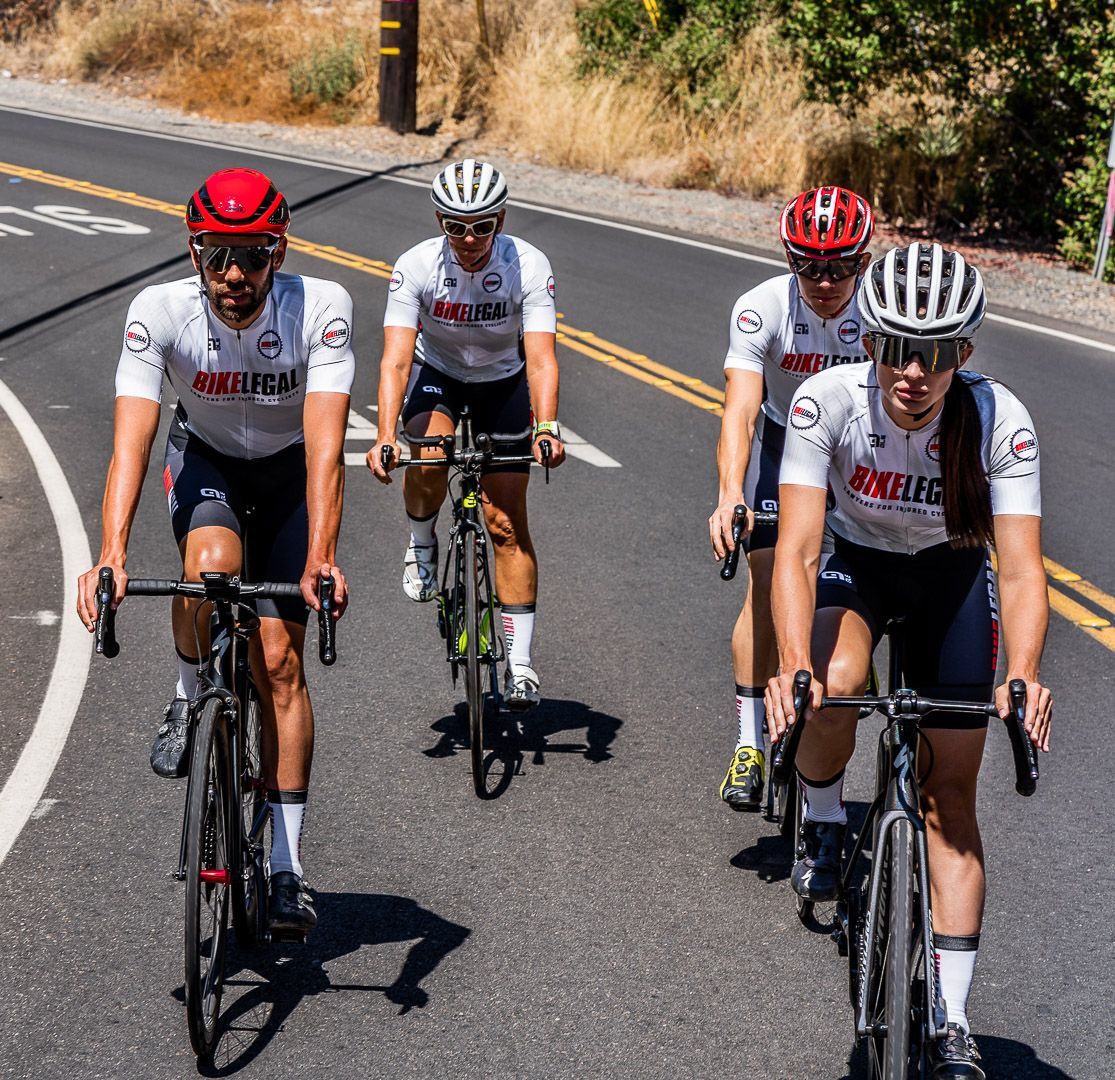The Vulnerability of Cyclists - Why Bicycle Accidents Can Cause Severe Injuries
Follow us on
social media!
The Vulnerability of Cyclists - Why Bicycle Accidents Can Cause Severe Injuries
Cycling is gaining worldwide popularity as a means of transportation, thanks to its numerous health benefits and positive influence on the environment. However, alongside the many advantages, it is crucial to recognize the significant risks and vulnerabilities that cyclists face on the roads. According to reports from the Centers for Disease Control and Prevention (CDC), bicycle accidents result in nearly 1,000 fatalities and over 130,000 injuries annually, primarily occurring on U.S. roads. These accidents can lead to severe injuries and, in some cases, even death. In this article, we will examine the risks faced by cyclists and the common injuries they experience.
Why Are Cyclists More Vulnerable than Motorists on The Road?
To better understand the vulnerability of cyclists, it is crucial to delve into the factors that put them at risk. Let's explore the reasons why cyclists face higher risks:
Lack of Physical Protection
Unlike motorists who benefit from the protective structure of a car, cyclists have minimal physical protection. In the event of an accident, they lack airbags, seat belts, and metal frames, leaving their bodies fully exposed to the impact. Consequently, accidents involving cyclists are more likely to result in severe injuries.
Size and Visibility Challenge
Cyclists are often less noticeable on the road compared to motor vehicles. This visibility discrepancy makes it difficult for drivers to identify and avoid cyclists, particularly in high-traffic areas or intersections. The limited visibility places cyclists at a higher risk of accidents since drivers may not be aware of their presence and fail to take necessary precautions.
Speed Differences and Crowded Roadways
Cyclists often share the road with fast-moving vehicles such as cars. The difference in speed between bicycles and cars creates hazardous situations, as drivers may struggle to detect cyclists adequately. Furthermore, when cyclists navigate roadways shared with pedestrians and other vehicles, the risk of bicycle accidents significantly increases. Urban areas account for approximately 75% of all bicyclist fatalities, as reported by the
National Highway Traffic Safety Administration (NHTSA).
Road Conditions and Hazards
Uneven surfaces, littered pathways, and potholes contribute to cycling accidents and contribute to injuries. Such conditions can cause cyclists to lose control or collide with unexpected obstacles.
Impact of Weather Conditions
Adverse weather conditions, including rain, snow, or ice, significantly increase the risk of accidents for cyclists. Slippery surfaces reduce traction, making it more challenging to maintain control of the bicycle and increasing the likelihood of falls. Diminished visibility during heavy rain or fog further increases the risk of accidents.
Limited Movement and Slower Speeds
Unlike motor vehicles, bicyclists have limited mobility and often travel at slower speeds. This poses challenges in promptly responding to sudden traffic changes or avoiding potential hazards. The slower speeds of cyclists also increase the likelihood of collisions with moving cars, putting them at a higher risk of accidents.
What Are the Typical Injuries Experienced by Cyclists?
While cycling offers freedom and excitement, it comes with the harsh reality of vulnerability on the road. Bicycle accidents can result in severe injuries with lasting physical and psychological impacts. Cyclists experience a range of injuries, including:
Brain and Head Injuries
Bicycle accidents pose a significant risk of brain and head injuries, which can have long-lasting effects on cognitive abilities, memory, and overall well-being. Wearing a helmet is crucial to mitigate these risks, as it provides essential head protection. Helmets play a vital role in reducing the likelihood of head injuries, skull fractures, concussions, and traumatic brain injuries by absorbing impact during collisions or falls.
Spinal Cord Injuries
In the event of a bicycle crash, significant impacts to the back or neck can result in spinal cord damage, which can have life-altering effects such as partial or total paralysis. To reduce the risk of spinal cord injury in bicycle accidents, consider using protective gear like back protectors or spine guards while cycling and maintain proper body alignment.
Fractures and Orthopedic Injuries
Bicycle accidents often lead to broken bones, particularly in the arms, legs, wrists, and collarbones. These injuries can be painful and often require medical treatment such as casting, surgery, or fixation. Fracture healing can take time and may involve physical therapy and rehabilitation. Additional medical treatment may be necessary if issues like non-union (failure of bones to heal) or malunion (improper alignment during healing) occur.
Soft Tissue Injuries
Bicycle accidents can cause soft tissue injuries, including facial injuries such as cuts and bruises on the lips and cheeks, as well as road rash. When a cyclist falls or collides with the road surface, the skin can suffer scratches and wounds. Without proper cleansing and treatment, these injuries can be uncomfortable and prone to infection. Long-term scarring is also possible, which may require additional medical procedures like scar revision surgeries.
Internal Injuries
In severe collisions, cyclists can sustain internal injuries such as organ damage, internal bleeding, or blood vessel ruptures. These injuries can be life-threatening, and it is important to seek medical attention immediately.
Factors Contribute to The Severity of Injuries in Bicycle Accidents
Understanding the factors that influence the severity of injuries in bicycle accidents is crucial for developing effective safety measures and improving the well-being of cyclists. Several elements are considered when assessing the gravity of a bicycle accident, providing valuable insights into reducing injury severity and enhancing road safety for cyclists.
Intersection Accidents
Collisions at intersections pose increased risks for cyclists. According to the National Highway Traffic Safety Administration (NHTSA), approximately 64% of bicycle fatalities occur on road segments located away from intersections, where vehicles often travel at higher speeds. Additionally, about 27% of bicycle fatalities happen specifically at intersections.
Intoxicated Driving
Motorists who drive under the influence of drugs or alcohol have impaired perception and response abilities, significantly increasing the risk of accidents involving cyclists and leading to more severe injuries. NHTSA reports that approximately one-third of collisions resulting in a bicyclist's death involve alcohol use by the motor vehicle driver, underscoring the vulnerability of cyclists to accidents caused by intoxicated drivers.
Lack of Cycling Infrastructure
The absence of proper cycling infrastructure increases the vulnerability of bicyclists. Adequate bicycle lanes or dedicated areas are necessary to reduce collisions with motor vehicles and prevent bicycle-related injuries.
Motor Vehicle Involvement
Collisions between bicycles and motor vehicles can cause severe injuries for cyclists due to the weight differential. The greater mass and speed of SUVs and pickups pose serious dangers on the road, especially when drivers are distracted or disregard the safety of other road users.
Experience and Skill of the Cyclist
The experience and skill level of a cyclist can impact their ability to handle challenging situations safely. Cyclists with higher levels of skill often have quicker reaction times and employ defensive riding techniques, which can help reduce the severity of accidents.
Pre-existing Medical Issues and Age
The severity of injuries in a cyclist can be influenced by their physical vulnerabilities or pre-existing medical conditions. Individuals with medical issues, poor balance, or weaker bones may be more susceptible to sustaining severe injuries in the event of an accident. Additionally, older adults, who may experience decreased bone density or slower healing processes, are particularly vulnerable to severe injuries.

Do Not Handle Bicycle Accidents Alone - Get Legal Assistance Now!
If you have been injured in a bicycle accident, it is crucial to seek legal representation from a bicycle accident lawyer. At Bike Legal, our team is dedicated to advocating for cyclists and helping them obtain the justice and compensation they deserve.
With our expertise in handling the unique complexities of bicycle accident cases, our experienced bicycle accident lawyers are ready to assist you. By entrusting your bicycle accident claim to us, you can focus on your recovery and moving forward. Schedule a free consultation today by calling 877-245-3534.
FAQs
Can Cycling Injuries Be Avoided?
While it may not be possible to prevent every bicycle crash, there are effective approaches to significantly reduce the number of injuries sustained by cyclists. These include increasing knowledge and awareness, improving infrastructure, promoting responsible behavior from both cyclists and drivers, and implementing appropriate safety measures. By implementing these measures collectively, we can make significant progress in enhancing cyclist safety and reducing the overall number of cycling-related injuries.
Are There Any Age-Specific Safety Factors for Cyclists?
Extra safety precautions are particularly important for young children and senior citizens when it comes to cycling. Older individuals should carefully assess their physical capabilities and make informed choices regarding routes and cycling speeds. Children must be supervised by parents or guardians, and they should always wear helmets while cycling. Additionally, children should engage in cycling activities in safe areas or designated spaces that minimize potential hazards. By prioritizing these safety measures, we can help ensure the well-being of young and older cyclists.

